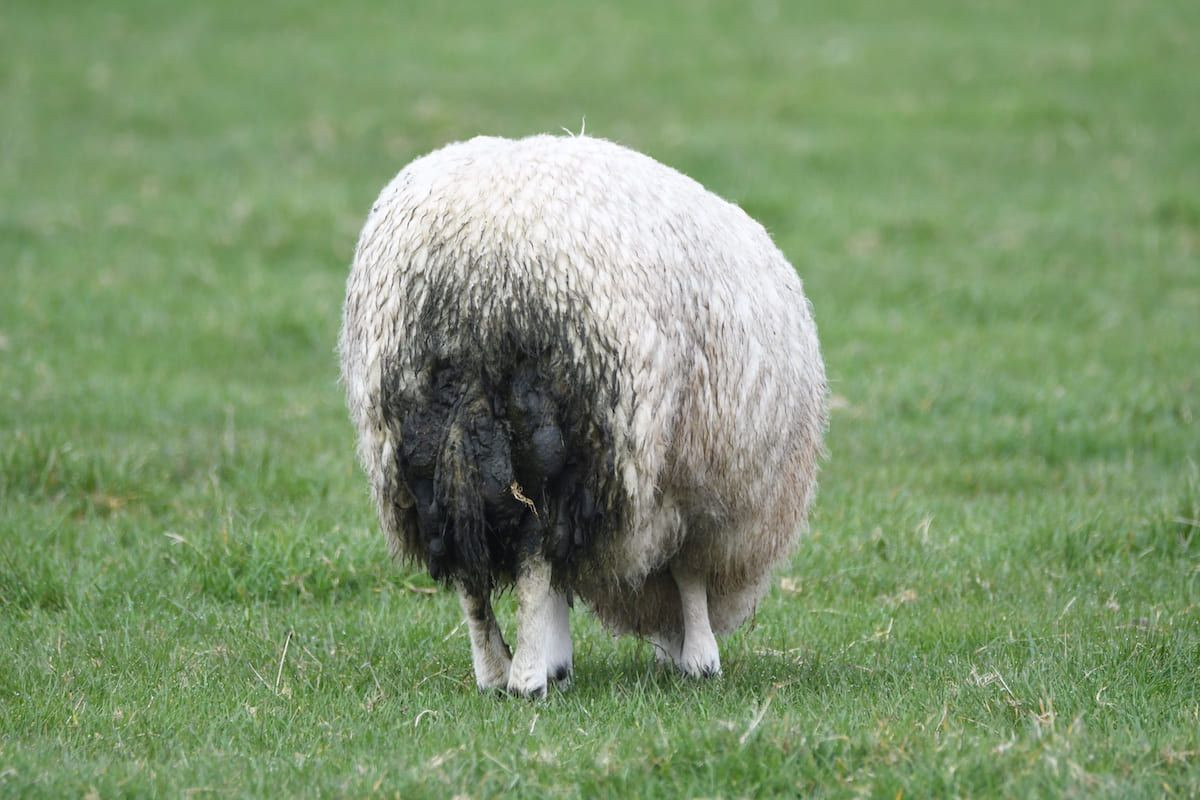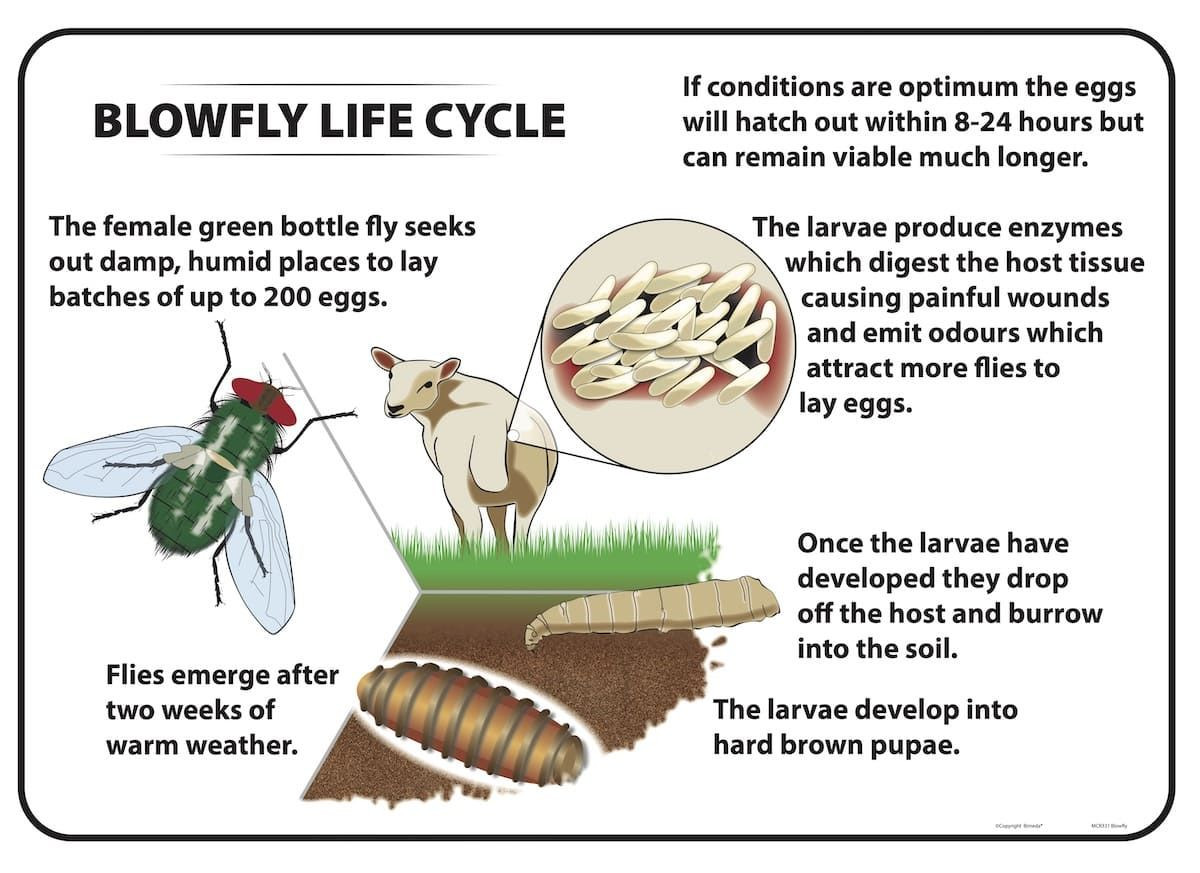Strike Back Against Blowfly
This information was provided by Bimeda, makers of Ectofly 12.5 mg/ml Pour-on Solution for Sheep
Blowfly strike risk is becoming increasingly unpredictable due to changing weather patterns requiring enhanced vigilance. We are now seeing strike as early as March and as late as December meaning the old 'predictable fly season' is a thing of the past.
As well as the welfare impact, strike will also affect your bottom line. It's estimated struck lambs might suffer a £10 production loss each and with more than 75% of farms affected annually, the costs quickly add up1.
The adult fly lays eggs in the fleece which then hatch into maggots. Those maggots produce enzymes which digest the host's skin tissue and also have abrasive mouth parts to further damage the skin surface. In addition to the trauma caused, the maggots also produced ammonia as a waste product which can be absorbed, by the sheep through open wounds, leading to shock and death. If they survive this, they risk secondary bacterial infections and the potential for further strike.
Risk Factors
While strike can occur on the clean, dry wool of any sheep, there are risk factors which increase the likelihood of strike occurring including:
• Presence of organic matter in the fleece
Fleeces soiled with faeces or urine provide the perfect environment for fly strike and the presence of organic matter can reduce the efficacy of preventative products, leaving the animals at high risk.
• Open wounds
This could be from footrot, a dagging injury or potentially even a previous fly strike wound. Even where preventative products have been applied, animals with open wounds are still susceptible to strike and need to be monitored more closely until the wound has healed completely.
• Thick fleeces
Humidity is a key risk factor for strike and thick fleeces can create the perfect, humid micro-climate for maggot development.
• Environmental conditions
Prolonged periods of hot weather can lead to an explosion in the fly population resulting in a very high challenge to livestock.
Prevention
Due to the multitude of factors which can predispose to fly strike, fly prevention products are only part of the solution, with other activities being critical to reduce the risk:
- Annual shearing and regular dagging/crutching of soiled fleeces. Shearing results in a 95% reduction in the incidence of strike2.
- Docking- where appropriate, and when done in conjunction with the law. Docked lambs are 5 times less likely to suffer from fly strike.
- Check animals frequently during high-risk period.
- Remove any carcasses promptly.
- Reduce scouring (gastrointestinal parasite management, good nutrition).
- Any wounds should be monitored closely until resolved.
- Reduce the incidence of footrot.
Which Preventative Product is Right for my Flock?
There are a number of factors to consider when choosing a fly prevention product for your flock.
The withdrawal period and duration of action are important, particularly when drawing lambs for sale. Discuss treatment options with your vet or SQP, taking into account which other parasites can be targeted and the timing of treatment, to help decide which product is most appropriate for you.
Products Available for Blowfly Prevention3
| Group | Active ingredient | Duration of protection | Meat withdrawal period |
|---|---|---|---|
| Synthetic pyrethroids | High-cis cypermethrin | 6-8 weeks | 8 days |
| Alpha-cypermethrin | 8-10 weeks | 49 days | |
| Insect Growth Regulators (IGRs) | Dicyclanil 12.5mg/ml | 8 weeks | 7 days |
| Dicyclanil 50mg/ml | 16 weeks | 40 days | |
| Dicyclanil 65mg/ml | 19 weeks | 40 days | |
| Organophosphate dip | Diazinon | 60 days | 49 days |
- https://www.flockhealth.co.uk/Portals/0/Documents/In%20Practice2015Wall%20Lovatt-181-8.pdf
- https://bvajournals.onlinelibrary.wiley.com/doi/10.1136/inp.h1434
- Note: deltamethrin has not been included as it is only licenced for the treatment of established strike (maggots) but not for the prevention of strike.


